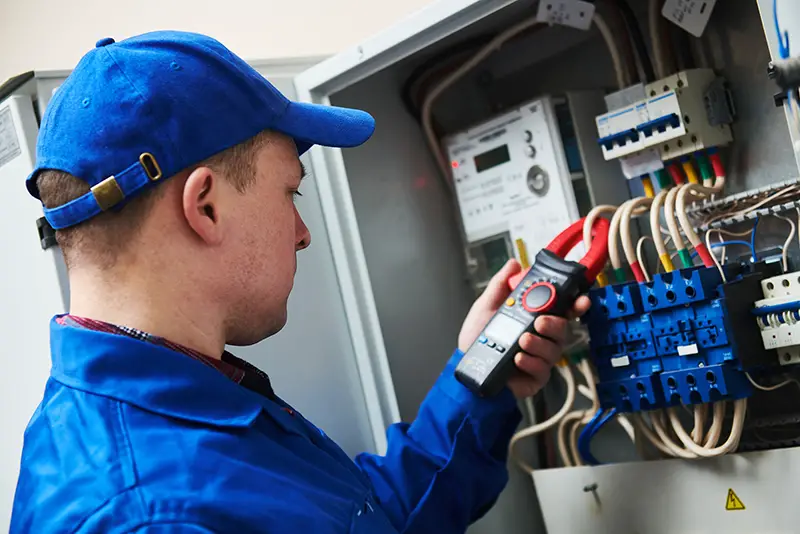Click here to get this post in PDF
An EICR is an Electrical Installation Report – official documentation that’s produced after a thorough assessment has taken place regarding the electrical installation within a property. The assessment must be conducted by a qualified, experienced, and approved contractor or certified electrician.
There isn’t yet a legal requirement to have an EICR conducted in any situation, they’re there for peace of mind that the property is electrically safe. It is recommended to consider having an EICR at regular intervals, much like a boiler is serviced annually. To have an annual EICR is significantly cheaper than an annual boiler service or even car service, but could save a property owner a considerable sum of money as it detects any potential problems before they arise – and become a costly issue.
Why is an EICR needed?
An EIRC is often a regulation for landlords in the UK – with recommendations of electrical installations being inspected and tested at least once every five years. Landlords may be required to show their electrical safety report to their local authority and to their tenants, to prove the property is safe.
There are also a number of reasons why an EICR may be requested by a householder, including if they were selling or buying the property, or needed the certificate for record-keeping. It is recommended that domestic homes have an EICR test carried out every ten years in order to check that there’s no deterioration of the electrical installation. For business owners, the recommendation is once every five years.
Other reasons an EICR may be needed are:
- Original installation age: Older installations should have an EICR more often than newer installations.
- Property type: For example, if there is a swimming pool in the property then it is recommended an EICR is conducted annually, however only the installation regarding the swimming pool would need assessing.
- Accidents within the property: Such as fires or floods
- Misuse or misconduct: Such as vandalism to the installation
- Property changes: For example, a change of tenants or prior to a property being brought or sold – an EICR before buying a property is the greatest way of finding out if there are any issues with the electrical system.
How is an EICR conducted?
A qualified electrical will make a number of observations of a property’s electrical installation and provide each one with a recommendation code. The code given will dictate a level of severity and observations will be written down in a clear, concise way. There are three competency categories, and these are:
- C1 – Immediate action required, the electrician has detected imminent danger within the property electrics
- C2 – Potential danger, the electrician should advise the customer that urgent attention is required
- C3 – Improvements to the electrical system are recommended
Specific problems that can be detected through an EICR include; any problems with electrical equipment or circuits that could overheat the system, fire hazards, electric shock rises, bonding or earthing safety issues, and potentially faulty electrical work which may result in an accident, injury, or even have fatal consequences. Any defects, or potential defects, will be explained to the customer who can then source their own quotes for the works recommended if they decide to.
You may also like: Home Fire Safety Tips
Image Source: Shutterstock.com

